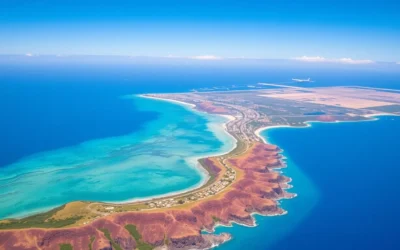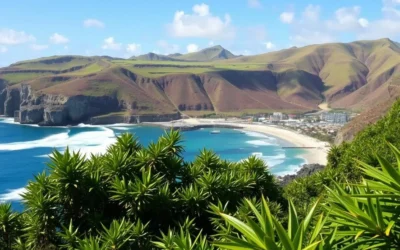✓ Accommodations✓ Flights✓ Rental Cars
Did you know that Niue, a remote island nation in the South Pacific, has no ATMs? This fascinating destination relies heavily on the New Zealand Dollar (NZD) for all transactions, making it a unique spot for travel enthusiasts. Whether you’re planning a trip or just curious, understanding how money works here is essential.
Niue’s self-governing status and stunning natural beauty make it a must-visit. From its crystal-clear waters to its vibrant culture, this island offers an unforgettable experience. However, managing your currency and knowing which card to use can make or break your trip.
This guide will walk you through everything you need to know about handling money in Niue. You’ll learn about cash management, payment options, and tips to make your travel seamless. Let’s dive in!
Discover Niue: A Remote Paradise
With its dramatic cliffs and crystal-clear waters, this destination is a hidden gem. The island’s raised limestone reefs and fringing reefs create a stunning coastline that’s perfect for exploration. Alofi, the capital, sits at the heart of this natural wonder, offering a glimpse into the island’s unique “top hat” profile.
The cultural charm of this island is equally captivating. Local art reflects the vibrant traditions of the friendly population. From handmade crafts to traditional practices, the island’s culture is deeply rooted in its history. This blend of natural beauty and cultural richness makes it a perfect getaway from the hustle of modern life.
When planning your trip, keep in mind that cash is widely accepted here. While there are no ATMs, most service providers and vendors are happy to assist with transactions. A small tip for exceptional service is always appreciated but not mandatory.
Whether you’re drawn to the dramatic cliffs or the warm hospitality, this island offers an extraordinary experience. Its remote nature ensures a peaceful retreat, while its natural and cultural highlights make it a destination like no other.
Understanding Niue’s Currency System
Understanding the currency system in a small, self-governing nation is key to a smooth trip. This destination relies on the New Zealand Dollar (NZD) for all transactions, making it simple for visitors to manage their finances. The NZD is backed by the Reserve Bank of New Zealand, ensuring stability and reliability.
Role of the New Zealand Dollar
Niue’s historical and administrative ties to New Zealand place it within the NZD’s financial orbit. This arrangement means the NZD is the official currency here. Whether you’re paying for meals, accommodations, or souvenirs, the NZD is universally accepted.
Local banks, like the Niue Development Bank, operate under this system. They provide essential services, though ATMs are not available. This reliance on cash makes it important to plan ahead and carry sufficient NZD for your trip.
Exchange Rate Insights
As of December 2023, the exchange rate stands at approximately $1 NZD to $0.60 USD. This makes currency conversion straightforward for international travelers. When exchanging money, it’s helpful to compare rates to get the best deal.
For visitors, this system offers ease and convenience. The NZD’s widespread use ensures you won’t face challenges when making purchases. With this information, you can confidently navigate the financial landscape of this unique country.
Niue: Ultimate Travelers Guide to Currencies & Payments
Planning a trip to a remote island requires careful preparation, especially when it comes to handling money. This guide is designed to help you navigate the financial landscape of this unique destination. From cash to digital systems, we’ve got you covered.
Understanding the local payment options is crucial for a smooth experience. This area will walk you through everything you need to know, ensuring you’re well-prepared for your adventure. Whether you’re paying for meals, accommodations, or souvenirs, this guide provides practical insights.
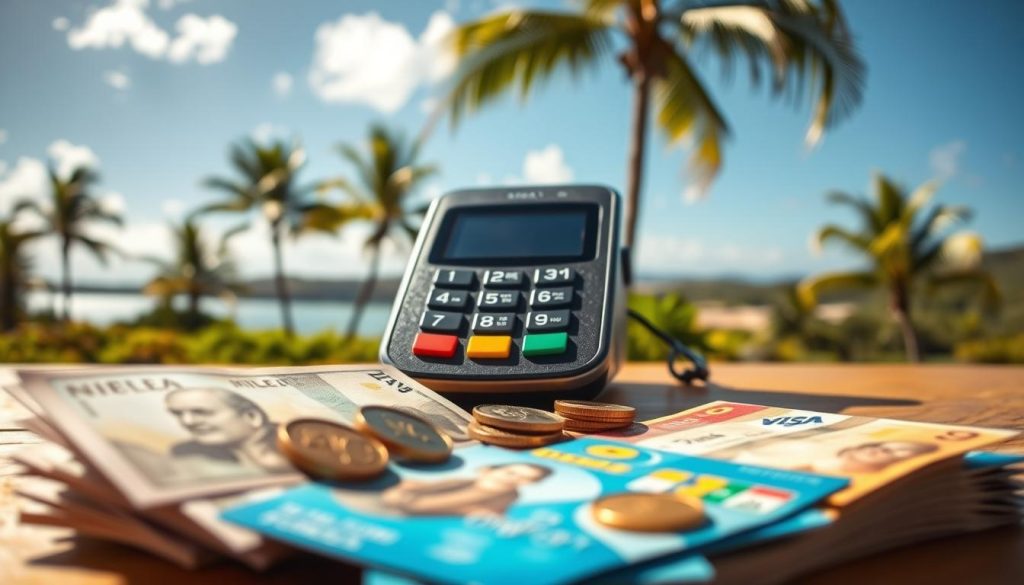
You’ll also learn about the financial providers available on the island. While there are no ATMs, local banks and businesses are equipped to assist with transactions. Being informed about these services will save you time and hassle during your trip.
This comprehensive resource is your go-to for managing currency and payments. It’s packed with tips and strategies to make your journey seamless. Stay tuned for detailed sections that will further enhance your travel planning.
Navigating Banking and ATM Services on Niue
Managing your finances on a remote island can be a unique challenge, especially when ATMs are nowhere to be found. In this destination, the Niue Development Bank plays a central role in handling all financial transactions. Understanding how to access cash and plan your expenses is key to a smooth trip.
Niue Development Bank Details
The Niue Development Bank is the sole financial institution on the island. Located in Alofi, it also serves as the post office, making it a convenient one-stop shop for visitors. While ATMs are unavailable, you can withdraw cash directly at the bank counter during business hours.
Typical banking hours are weekdays from 9:30 a.m. to 4:00 p.m. It’s a good idea to plan your cash needs in advance to avoid any inconvenience. For tourists, carrying a mix of cash and a backup credit card is recommended.
Accessing Cash in Alofi
Since ATMs are not an option, withdrawing cash at the bank counter is your best bet. Ensure you have enough New Zealand Dollars (NZD) for daily expenses, as most businesses prefer cash. If you’re purchasing a ticket for local tours or activities, confirm the payment method beforehand.
Here’s a quick update for travelers: always carry small denominations for easier transactions. Planning ahead and keeping a backup plan will help you navigate the island’s cash-dependent system with ease.
Maximizing Credit and Debit Card Usage
When traveling to remote destinations, knowing how to use your credit and debit cards efficiently can save you time and money. While cash is often preferred in smaller areas, many businesses, including restaurants and retail outlets, accept cards. This makes it easier to manage your expenses without carrying large amounts of cash.
MasterCard and Visa are the most widely accepted card networks. These are reliable options for most transactions. However, it’s important to be aware of potential risks, such as additional fees or dynamic currency conversion. Always check with your bank about international transaction fees before your trip.
Managing Fees and Security
Using a debit card or credit card abroad can sometimes incur extra charges. For example, some banks charge a fee for foreign transactions. To avoid surprises, notify your bank of your travel plans and inquire about their fee structure.
If you plan to use an atm before arriving, ensure your card is secure. Opt for ATMs located in well-lit, secure areas. Additionally, consider carrying a backup card in case of emergencies. These precautions will help you enjoy a water-clear financial experience during your travels.
| Card Type | Acceptance | Tips |
|---|---|---|
| Credit Card | Widely accepted | Check for foreign transaction fees |
| Debit Card | Accepted at most ATMs | Use secure ATMs and notify your bank |
By following these tips, you can maximize the use of your cards and enjoy a seamless payment experience. Whether you’re dining out or shopping, being prepared ensures your trip is as smooth as possible.
Currency Exchange Tips and Strategies
Exchanging currency efficiently can make a big difference in your travel budget. Whether you’re at an airport, hotel, or local bank, knowing where to get the best rates and avoid extra fees is essential. This section will guide you through practical strategies to maximize your money during your trip.

Finding the Best Rates
Start by comparing rates at banks and authorized exchange bureaus. These locations often offer more competitive rates than tourist spots. For example, specialist money transfer services typically provide better deals than traditional banks. Always check online rate checkers to stay updated on the latest exchange trends.
Avoiding Extra Fees
Be cautious when exchanging money at airports or hotels. These locations often charge higher fees due to convenience. Instead, plan ahead and visit local banks or trusted exchange services. Avoid dynamic currency conversion, as it can add unnecessary costs to your transactions.
Pro Tips for Exchanges
- Use online tools to monitor exchange rates in real-time.
- Carry small denominations for easier transactions throughout the day.
- Notify your bank of your travel plans to avoid card issues abroad.
By following these tips, you can save money and make the most of your travel budget. Planning your currency exchange strategy in advance ensures a smoother and more enjoyable trip.
Embracing Digital and Mobile Payment Options
Digital payment options are transforming the way travelers manage their finances in remote destinations. With the rise of mobile connectivity, even the most secluded areas are adopting modern solutions. This shift makes it easier than ever to stay connected and handle transactions seamlessly.
One standout option is Telecom Niue’s Visitor SIM card. This innovative product combines mobile data access with digital payment capabilities. It’s designed to keep you connected while simplifying your financial transactions.
Visitor SIM Cards with Payment Features
The Visitor SIM card offers generous data allowances and call minutes, ensuring you stay connected throughout your trip. It also supports contactless payment systems, making it a versatile tool for both urban areas and smaller cities. Whether you’re dining out or shopping, this SIM card streamlines the process.
Purchasing a Visitor SIM card is straightforward. Upon arrival, visit Telecom Niue’s office with your passport to complete the process. The staff will assist you in activating the SIM and setting up its payment features. This ensures compliance with local regulations while providing a hassle-free experience.
Here’s a quick overview of the Visitor SIM card’s benefits:
- High-speed data for seamless internet access.
- Call minutes to stay in touch with loved ones.
- Contactless payment support for quick transactions.
Digital wallets and secure payment apps further enhance your travel freedom. These tools allow you to make payments with just a tap, reducing the need to carry cash. Whether you’re using a credit debit card or a mobile app, these options ensure convenience and security.
| Feature | Details |
|---|---|
| Data Allowance | Up to 5GB |
| Call Minutes | 100 minutes |
| Payment Support | Contactless and digital wallets |
By embracing these digital solutions, you can enjoy a smoother and more efficient travel experience. Whether you’re exploring the city or relaxing in a remote area, these tools ensure you’re always connected and ready to make payments.
Practical Money-Saving Tips for Travelers
Exploring a remote destination can be both exciting and challenging, especially when it comes to managing your budget. With limited access to ATMs and higher shipping costs affecting local prices, it’s essential to plan ahead. Here are some practical tips to help you save money and make the most of your trip.
Budget-Friendly Spending
Start by setting a daily budget for meals, activities, and souvenirs. Local supermarkets often have higher prices due to shipping costs, so consider bringing non-perishable snacks from home. Look for widely accepted payment methods like cash or debit cards to avoid extra fees.
Here are some strategies to stretch your budget:
- Compare prices at different stores before making purchases.
- Opt for local markets, where prices are often lower than in tourist areas.
- Plan meals around seasonal produce to save on groceries.
Smart Currency Management
Balancing cash and card usage is key to avoiding unnecessary expenses. While cash is preferred for small transactions, cards are convenient for larger purchases. Always carry some emergency cash in case you encounter places that don’t accept cards.
Visit the local office of your bank or a trusted exchange service to get the best rates. Avoid exchanging money at airports or hotels, as they often charge higher fees. Here’s a quick comparison of common expenses:
| Item | Average Cost (NZD) |
|---|---|
| Meal at a local restaurant | $15-$25 |
| Groceries for a day | $20-$30 |
| Souvenirs | $10-$50 |
By following these tips, you can enjoy your trip without overspending. Planning ahead and staying informed will help you make the most of your travel budget.
Understanding Local Prices and Additional Costs
Planning your budget for a trip involves understanding local prices and additional costs. From meals to transport, knowing what to expect helps you manage your finances effectively. This section breaks down everyday expenses to ensure your travel plan stays on track.
Cost of Meals and Accommodation
Meals can vary depending on where you dine. Local cafes often offer affordable options, with prices ranging from $10 to $20 per meal. Resort dining, on the other hand, can cost between $25 and $50. For the best value, consider mixing casual and upscale dining experiences.
When it comes to accommodation, you’ll find a range of options. Airbnb cottages are budget-friendly, starting at $50 per night. Resorts, while pricier, offer added amenities and typically cost $150 or more. Comparing different providers ensures you get the most for your money.
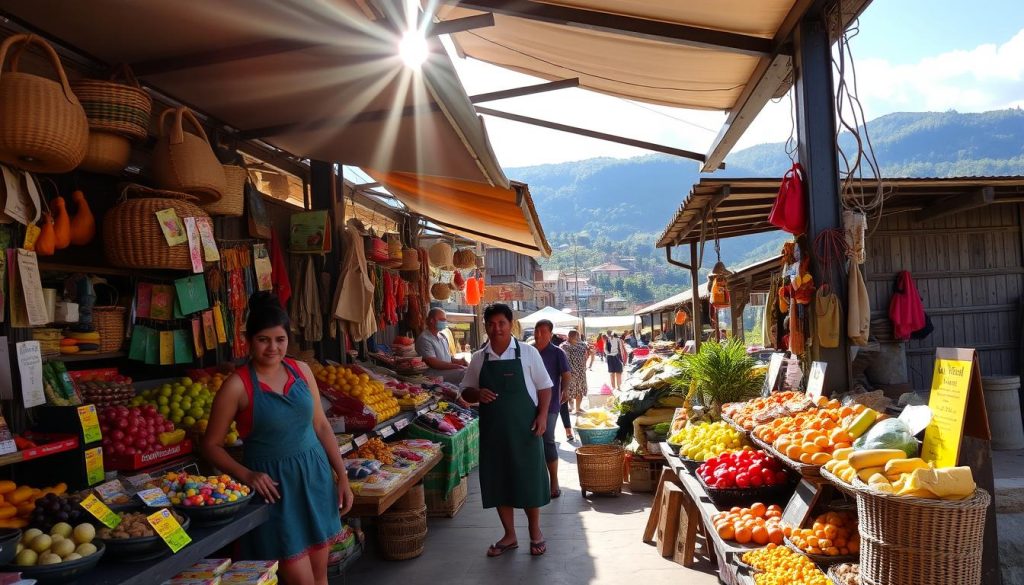
Transportation Expenses
Getting around is another key expense. Car rentals are a popular choice, with daily rates starting at $40. Fuel prices are approximately $1.50 per liter, so plan your routes to save on gas. Public transport is limited, but taxis are available, with fares varying by the hour.
Here’s a quick breakdown of common costs:
| Expense | Average Cost (NZD) |
|---|---|
| Meal at a local cafe | $10-$20 |
| Resort dining | $25-$50 |
| Airbnb cottage | $50+ per night |
| Car rental | $40+ per day |
By understanding these costs, you can create a realistic budget for your trip. Comparing prices and planning ahead ensures you get the best value during your stay.
Managing Your Money Abroad Safely
Keeping your money safe while traveling is crucial for a stress-free experience. Whether you’re carrying cash or using credit debit cards, taking the right precautions ensures your funds remain secure. This section provides practical tips to help you stay vigilant and protect your finances.
Secure Storage Tactics
When traveling, it’s essential to store your cash and cards in a safe way. Hotel safes are a reliable option for valuables, but avoid leaving large amounts of cash unattended. For added security, consider using concealed pouches or money belts. These discreet options keep your funds close and out of sight.
Here are some additional storage tips:
- Divide your cash and cards between multiple locations.
- Keep a backup card in a separate, secure spot.
- Use RFID-blocking wallets to prevent digital theft.
Preventing Payment Fraud
Payment fraud is a growing concern for travelers. To minimize risks, monitor your transactions regularly. Check your bank statements for unauthorized charges and report suspicious activity immediately. Notify your financial institution of your travel plans to avoid card blocks or declines.
Here’s how to protect yourself:
- Avoid using public Wi-Fi for financial transactions.
- Opt for secure ATMs located in well-lit, busy areas.
- Be cautious of skimming devices at payment terminals.
If you suspect fraudulent activity, act quickly. Contact your bank or card issuer to freeze your account and dispute unauthorized charges. Staying proactive ensures your funds remain safe throughout your trip.
| Security Measure | Benefit |
|---|---|
| Hotel Safes | Secure storage for valuables |
| Money Belts | Discreet and portable |
| RFID Wallets | Protects against digital theft |
By following these strategies, you can manage your money abroad with confidence. A little planning goes a long way in ensuring your financial security and peace of mind.
Shopping for Local Art and Souvenirs
Exploring the vibrant local art scene is a must for any visitor looking to take home a piece of the island’s culture. From handmade crafts to unique souvenirs, the island offers a variety of treasures that reflect its rich heritage. Shopping here isn’t just about buying—it’s about connecting with centuries-old practices and modern creativity.
One of the best places to start is the Tahiono Art Gallery. This gallery showcases stunning works by local artists, blending traditional techniques with contemporary styles. Another gem is Kauhi Kraft, where you’ll find beautifully crafted items like woven baskets and carved wooden pieces. These spots are perfect for discovering one-of-a-kind gifts.
Unique Handicrafts and Cultural Insights
Local handicrafts tell the story of the island’s history and traditions. From intricate carvings to vibrant textiles, each piece is a testament to the skill and creativity of the artisans. Visiting these shops gives you a deeper appreciation for the island’s culture and the chance to support local practices.
For the best experience, plan your visit during the island’s cultural festivals, which often take place in the summer months. These events are a great opportunity to see artisans at work and purchase their creations directly. Many shops also offer workshops, allowing you to try your hand at traditional crafts.
Consider adding a tour of artisan workshops to your itinerary. This not only enriches your shopping experience but also provides a meaningful connection to the island’s heritage. Whether you’re browsing galleries or chatting with local artists, shopping here is an unforgettable part of your journey.
Internet and Telecom Payment Solutions
Staying connected while traveling is more than just convenience—it’s a necessity for managing your trip smoothly. Reliable internet access allows you to plan activities, manage finances, and stay in touch with loved ones. In this destination, Telecom Niue’s Visitor SIM card is a game-changer for both communication and digital payments.
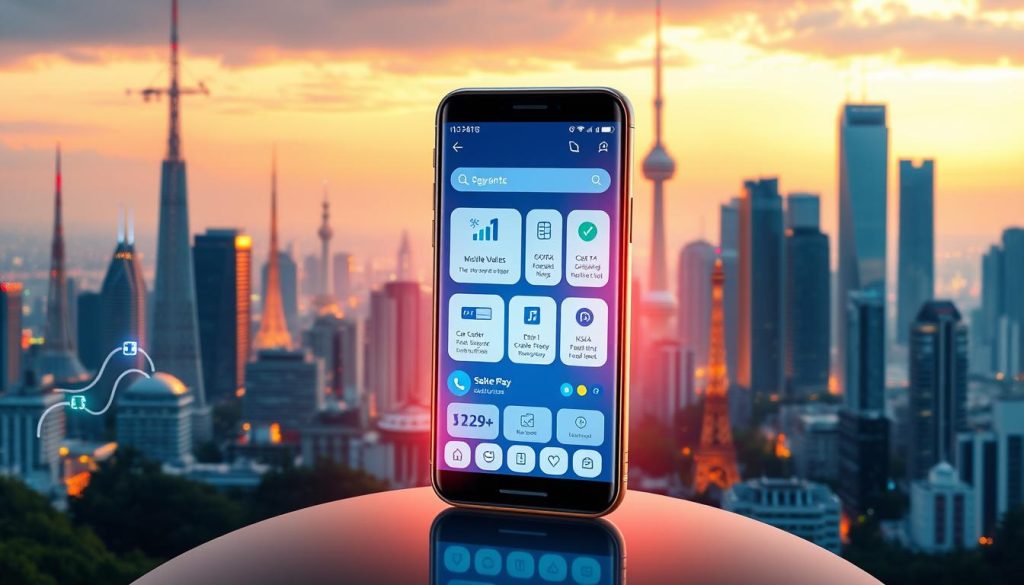
Telecom Niue Visitor SIM
The Visitor SIM card offers fast 4G connectivity, ensuring you stay online wherever you go. It’s designed to simplify your trip by combining mobile data with digital payment capabilities. This means you can handle transactions, check maps, and update your plans in real time.
Purchasing the SIM card is easy. Visit Telecom Niue’s office upon arrival with your passport. The staff will assist you in activating the SIM and setting up its features. This ensures you’re ready to explore without worrying about connectivity issues.
Staying Connected with 4G
4G networks provide the speed and reliability needed for seamless internet access. Whether you’re booking tours, transferring funds, or accessing emergency services, a strong connection is essential. The Visitor SIM card ensures you’re always connected, even in remote areas.
Here’s why the Visitor SIM card is a must-have:
- High-speed data for uninterrupted browsing.
- Generous call minutes to stay in touch.
- Contactless payment support for quick transactions.
The best time to purchase the SIM card is upon arrival, ensuring you’re connected from the start. The most convenient place to buy it is at Telecom Niue’s office, where you can get assistance with setup and activation.
| Feature | Details |
|---|---|
| Data Allowance | Up to 5GB |
| Call Minutes | 100 minutes |
| Payment Support | Contactless and digital wallets |
By using the Visitor SIM card, you can enjoy a smoother and more efficient travel experience. Stay connected, manage your money, and explore with confidence.
Securing Travel Insurance and Emergency Funds
Traveling to new destinations is exciting, but unexpected events can turn your trip upside down. That’s why securing travel insurance and maintaining emergency funds are essential for a stress-free journey. These precautions ensure you’re prepared for any situation, from medical emergencies to trip cancellations.
Coverage Tips
Choosing the right travel insurance policy is crucial. Look for comprehensive coverage that includes medical emergencies, trip cancellations, and lost luggage. Policies from providers like American Express or Chase Sapphire Reserve® often offer robust benefits, such as up to $20,000 in trip cancellation coverage.
Before purchasing, check the policy’s coverage time frames and claim processes. For example, some policies require claims to be filed within 60 days of the incident. Always read the fine print to avoid surprises.
Accessing Emergency Funds
In case of emergencies, having quick access to funds is vital. Keep a portion of your budget in a secure place, such as a hotel safe or a concealed pouch. Additionally, notify your bank of your travel plans to ensure your cards work abroad.
Here are some steps to access emergency funds:
- Carry a mix of cash and cards for flexibility.
- Use trusted providers like Telecom Niue’s Visitor SIM for real-time assistance.
- Keep a backup card in a separate location for added security.
“Travel insurance isn’t just a safety net—it’s peace of mind. Always choose a policy that fits your needs and destination.”
By following these tips, you can travel confidently, knowing you’re prepared for any situation. Whether it’s a medical emergency or a delayed flight, having the right coverage and access to funds ensures your trip stays on track.
Planning Your Travel Itinerary in Niue
Crafting a well-thought-out travel plan ensures you make the most of your time exploring this unique destination. With its stunning landscapes and rich culture, careful planning is key to a memorable trip. Start by mapping out your must-see spots and balancing them with downtime to fully enjoy each experience.
Mapping Out Sightseeing Spots
Begin by identifying the top attractions you want to visit. From dramatic cliffs to crystal-clear waters, there’s no shortage of natural beauty. Include cultural landmarks like local art galleries and traditional markets to immerse yourself in the island’s heritage. Prioritize activities based on your interests and the time you have available.
For example, a whale-watching tour or a visit to a local craft market can add depth to your itinerary. Use local maps and information centers to plan your routes efficiently. This ensures you don’t miss out on hidden gems while making the most of your stay.
Local Transportation Options
Getting around is straightforward with a few key options. Car rentals are the most convenient, allowing you to explore at your own pace. Daily rates start at NZ$50, making it an affordable choice for small groups or families. Public transport is limited, so plan accordingly if you prefer not to drive.
For shorter distances, consider walking or biking to soak in the scenery. Local taxis are available but limited, so book in advance if needed. Efficiently scheduling your transportation ensures you spend more time enjoying the sights and less time navigating.
Here’s a quick overview of transportation costs:
- Car rental: NZ$50+ per day
- Petrol: NZ$3.50+ per liter
- Taxi: Rates vary by distance
By combining sightseeing with practical transportation planning, you can create a seamless itinerary. Whether you’re exploring natural wonders or cultural hotspots, a well-organized plan ensures you make the most of your trip.
Insider Advice on Balancing Cash and Card Payments
Finding the right balance between cash and card payments can make your trip smoother and more enjoyable. While cash is ideal for small transactions, cards offer convenience for larger purchases. Knowing when to use each ensures you’re prepared for any situation.
Managing Small Transactions
For everyday expenses like snacks or souvenirs, cash is your best bet. Carrying small denominations ensures you’re ready for minor purchases without relying on cards. This approach also helps you avoid dynamic currency conversion fees, which can add up over time.
Here are some tips for managing small transactions:
- Keep a mix of bills and coins for flexibility.
- Use cash at local markets or small vendors where cards may not be accepted.
- Track your spending to avoid running out of cash unexpectedly.
Backup Payment Strategies
Even with careful planning, unexpected issues can arise. Having a backup payment strategy ensures you’re never stranded. For example, carry a secondary card or use a digital wallet as a failsafe. Notify your bank of your travel plans to prevent card blocks or declines.
Here’s how to stay prepared:
- Store emergency cash in a secure place, like a hotel safe.
- Use multi-currency cards to avoid foreign transaction fees.
- Monitor your accounts regularly for unauthorized charges.
By balancing cash and card usage, you can enjoy a seamless payment experience. Whether you’re exploring a bustling market or dining at a local restaurant, these strategies ensure you’re always in control.
| Payment Method | Best Use | Tips |
|---|---|---|
| Cash | Small transactions | Carry small denominations |
| Credit Card | Larger purchases | Check for foreign transaction fees |
| Digital Wallet | Backup option | Ensure compatibility with local systems |
Conclusion
Smart financial planning is the cornerstone of a stress-free travel experience. Throughout this guide, we’ve highlighted essential tips for managing your money effectively. From understanding local payment systems to balancing cash and digital methods, these strategies ensure you’re prepared for any situation.
Planning ahead is crucial. By organizing your finances in advance, you can avoid unexpected issues and focus on enjoying your adventure. Whether it’s carrying small denominations for daily expenses or using secure digital wallets, these steps make your journey smoother.
Remember, careful money management enhances every aspect of your trip. Take the time to review the tips provided and apply them to your travel plans. For future adventures, revisit this guide for updates and fresh insights. A well-prepared budget ensures you can fully embrace the beauty of your destination, no matter the place.
The above is subject to change.
Check back often to TRAVEL.COM for the latest travel tips and deals.

